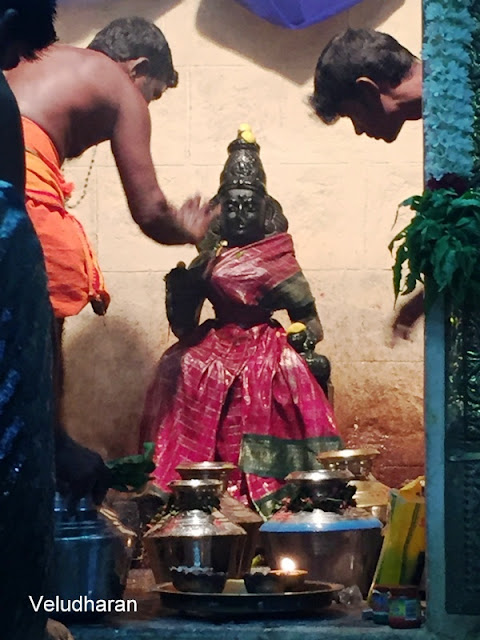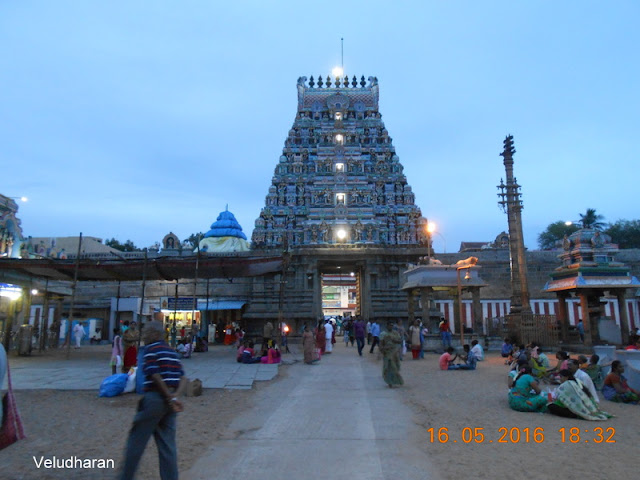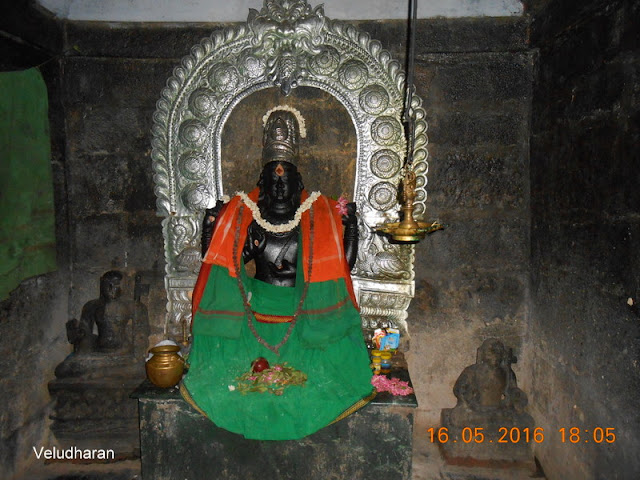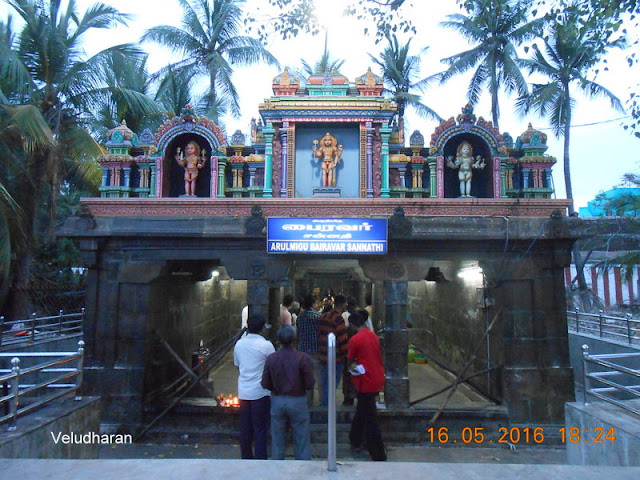22nd July
2016.
The
annual festival of our Kula Deivam Sri Veeramathi Amman, at Talkuni, near
Kolapalur was celebrated this year on 20th, July and 21st July
2016. This Sri Veeramathi Amman belongs to a section of Viswakarmas of Kuruppu
nadu in Kongu mandalam ( During Chozha, Pandya, Vijayanagara kings rule
the present Coimbatore, Erode, Salem districts are called as
Kongu mandalam and the same was divided in to 24 subdivisions and one of the
subdivision is Kuruppa nadu with Vijayamangalam as head quarter )
and worshiped as Kula Deivam.
The festival will be
held during 1st week of every year. This year I was fortunate
to attend the both days functions. Since
it is a village god, the temple is little away from the village Talkuni
and poojas are performed by a non Brahmin priest, usually called as
poojari. Kannimar and Karuppaswamy are in the adjacent building. The
Poojas conducted are typical Village type and not confirmed to any
agamas.
TIRTH POT ( KUDAM ) PROCESSION
On
19th July 2016, afternoon, A batch of 20 people went to Bhavani
river ( Puliampatti ) 12 KM away from Gobichettipalayam and brought
theertham for abhishekam usually called as “Abhisheka tirtha kudam“.
The abhisheka tirtha kudams are brought to the temple in
procession with melathalam and fire works ( Musical Instruments like Thavil, Nathaswaram, Pambai are played. Few ladies also danced to
the tune of music, called as “sami aduthal” throughout the procession.
Abhisheka Theertha kudam procession with melathalam
Abhisheka Theertha kudam procession – Ladies dancing
– sami aduthal
Abhisheka Theertha kudam procession – Ladies dancing
– sami aduthal
Abhisheka Theertha kudam procession
Abhisheka Theertha kudam kept at temple after procession
AMMAI
AZHAITHAL ( அம்மை அழைத்தல்
) ( INVITING THE OTHER GODS FOR
THE FUNCTION )
This
function is used called as “ammai azhaithal”, is to invite other gods right
from Sri Vinayagar, to all the Ammans of Tamil Nadu ( Mari Amman, Kali Amman etc..). The Pooja was offered to a very small linga shaped
stone, called as Padavettamman on a small platform. The offerings
are brought from the temple with mela thalam, by a person who has the authority
of the same village. At the end of the pooja, the pambai musician invites
all the gods to attend Sri Veeramathi Amman’s thiru Kalyana urchavam ( ie the
annual function and not the usual thirukalyana functions held at Shiva or
Vishnu temples. )
Pooja to Sri Padavettamman
Pooja to Sri Padavettamman
Pooja to Sri Padavettamman
Pooja to Sri Padavettamman
AMMAN
ABHISHEKAM.
Maavilakku
at Sri Azhagu Raja Perumal temple
Mavilakku procession
Maavilakku procession was received at the temple and
a pumpkin was cut to remove thiristi ( to remove bad happenings)
Abhishekam to Amman
Abhishekam to Amman
Abhishekam to Amman
Abhishekam to Amman
Amman
in Santhana alangaram after Abhishekam
THE
PERUM POOJA TO SRI KARUPPANNA SWAMY.
After
the pooja to Sri Veeramathi Amman, the perum Pooja was started to Sri
Karuppanna Swamy and Non vegetarian prasadam was offered after
sacrificing the goats and cocks.. A separate poojari conducted the pooja for Sri Karuppanna Swamy with the mouth covered. During that
time, Kannaimars are covered with cloth. The Non veg prasadams are
distributed to the was distributed to the devotees.
Pooja
to Sri Karuppanna Swamy
Saptamatrikas or Kannimars
A musical treat
The
tablet contains the names of the donors for the expansions of the temple was
opened by Mr T P Thangaraj of P R D Exports, Thiruchengode.
For
the details and Photos of the annual functions held earlier : CLICK HERE
--- OM SHIVAYA NAMA:---












































